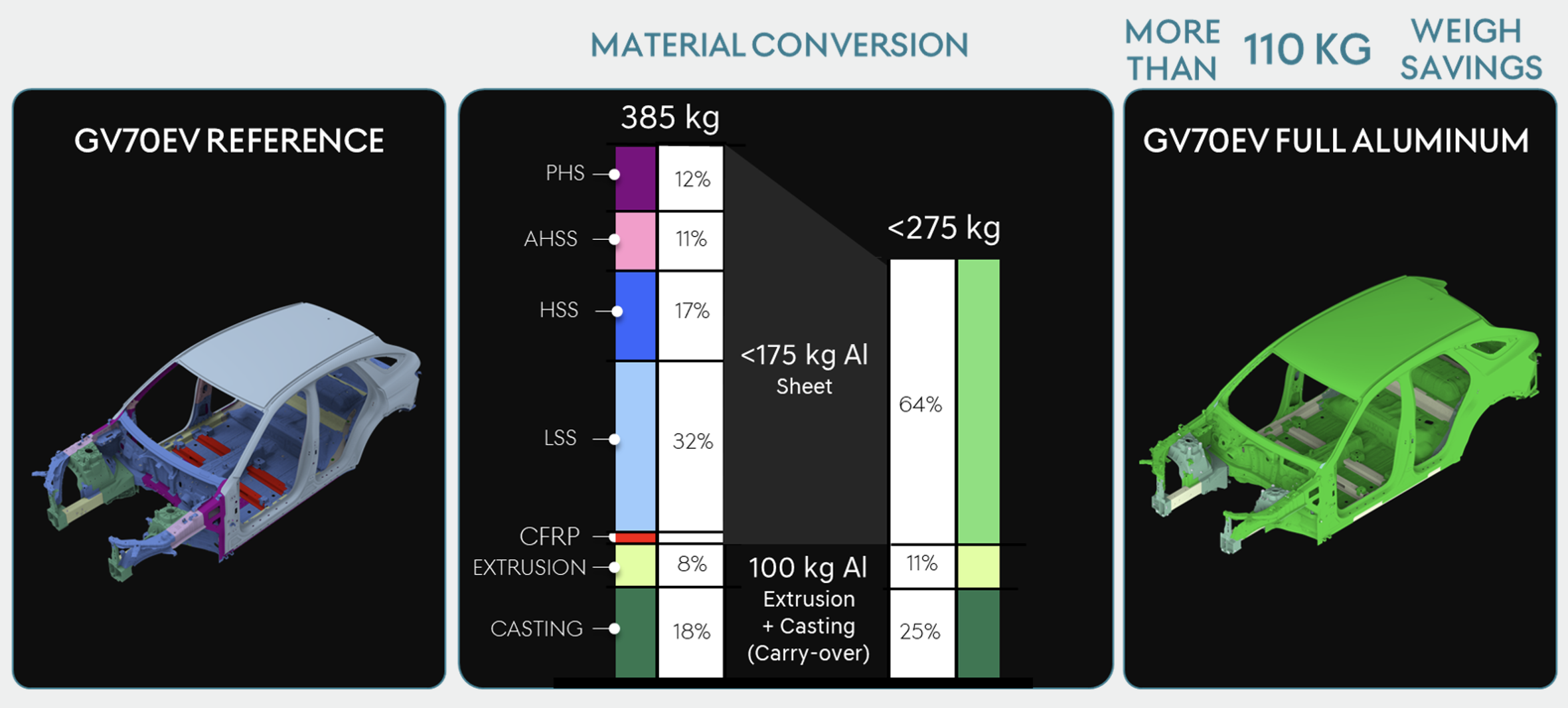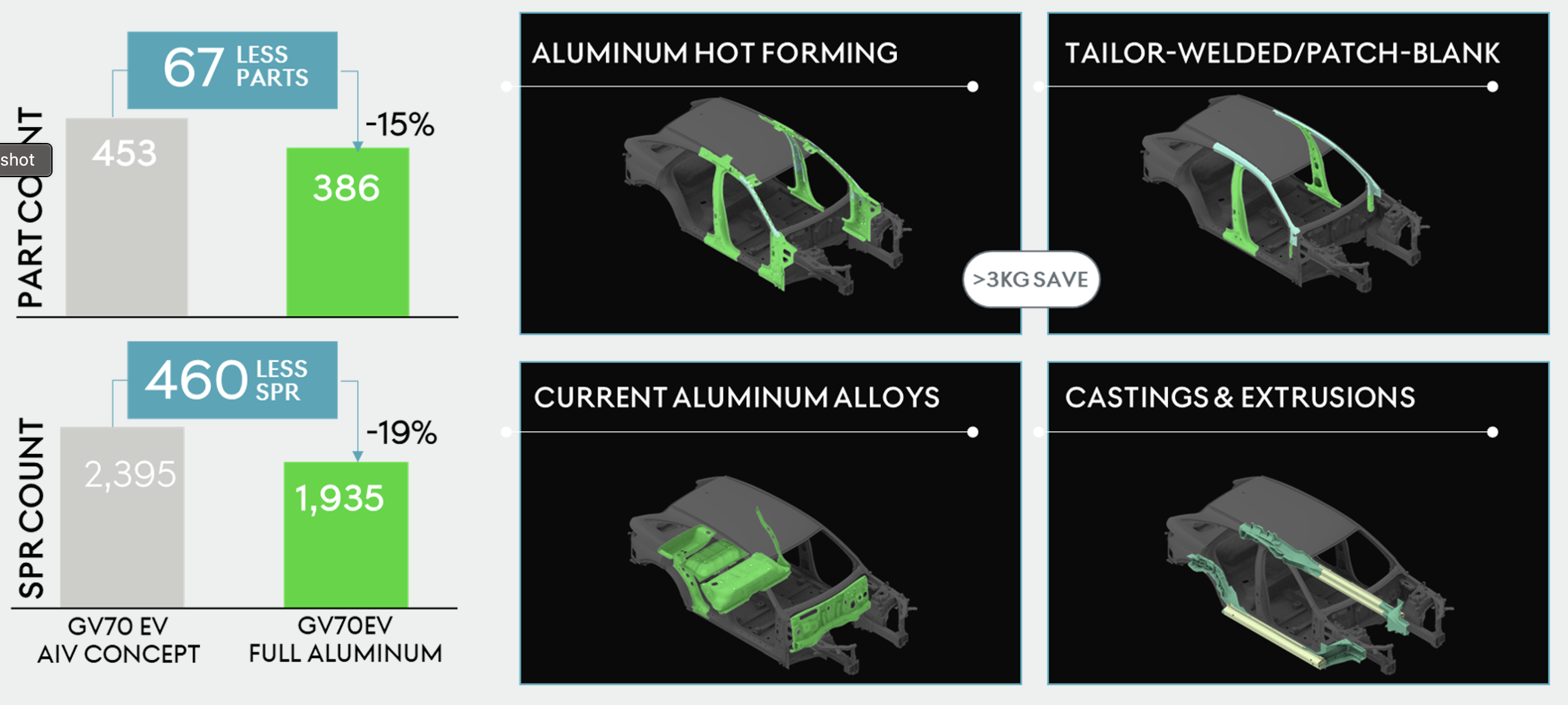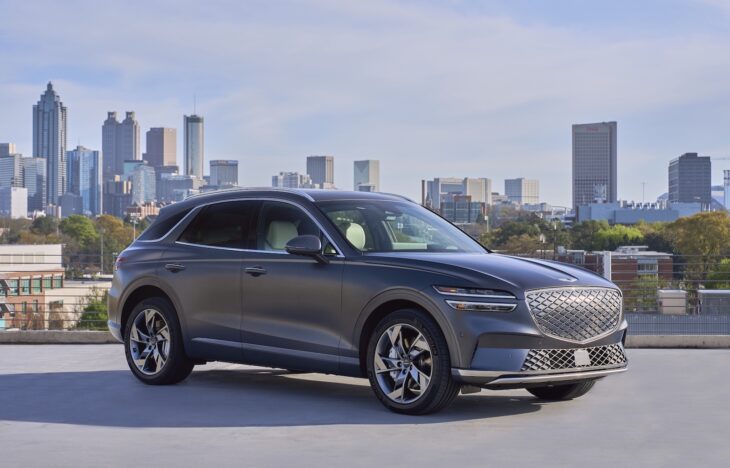Alumobility partnered with the Hyundai Motor Europe Technical Centre to conduct a theoretical conversion of the Genesis GV70 electric SUV steel-intensive body to a full-aluminum body. The results of the project were published in a new study, titled “Technical Case Study: A Vehicle Conversion of the Genesis GV70EV from a Steel intensive Body to an Aluminum Design,” and was presented at the EuroCarBody’s 25th Global Car Body Benchmarking Conference in October 2023 in Bad Nauheim, Germany.
The steel-intensive Genesis GV70 electric vehicle has a mixed-material body structure weighing 385 kg. For the study, the companies converted 285 kg of steel to 171 kg of aluminum, showing a 40% weight savings for the converted parts. In the process, the researchers applied standard gauge and grade conversion — thus maintaining stiffness (structure and exterior) and strength (buckling and crash/crush) to achieve the same or better body-in-white performance, including safety and body stiffness.

The project also focused on optimizing the design to consolidate parts and reduce the type and number of joints required. By applying the right manufacturing method for the right component, the team was able to consolidate components into a single piece, such as with the A pillar and B pillar assemblies in the upper structure and in the dash panel and rear floor assemblies in the underbody. As a result, the team was able to reduce the part count by 15%, bringing the number of components down from 453 parts in the steel-intensive version to only 386 in the aluminum version. This further decreased the body weight by 3 kg.


While the part consolidation limited the amount of joints required, the team also applied systematic joint reduction methods. In this way, they reduced the total number of joints in the full aluminum body and minimized the quantity of unique self piercing rivet (SPR) joint stacks from the steel-intensive reference to the full aluminum GV70. The final spot welding joint count dropped to only 4,575 (a 25% reduction from the steel reference), with SPR joints reduced to only 1,935.
By demonstrating part consolidation, using the latest aluminum processes, as well as part manufacturing feasibility, these integration opportunities often resulted in better material utilization than the steel reference parts.

